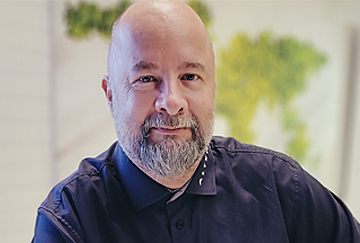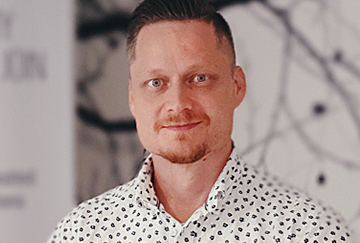Many everyday devices contain embedded systems – this technology can even improve brain health
Embedded systems combine mechanics, electronics and software to perform a precisely defined task. There’s an endless number of possible applications – from a standard computer mouse or car accelerator pedal to industrial robots and demanding medical devices.

An embedded system includes a computer, even if it doesn’t look like one. These systems can be small devices or complex entities that also include a user interface. What they all have in common is that the system takes care of the exact purpose that it was developed for. When there is nothing extra, one can achieve good operational reliability.
CASE: ”Brain Wash”

ALTEN has been making embedded systems for a long time, for example for medical devices. One example is a device that can be used to remove blood clots from the brain. The device is intended for patients with subdural hematoma (a bleeding in the brain) that can be caused by, for example, a car accident. ALTEN designed and developed all areas of the device, from mechanics and electronics to software. As with many life saving devices, the curing method could also potentially be harmful. In this case keeping track of ICP (brain pressure) while pumping liquid into the brain and having the device monitor itself is essential for patient safety.
This device consists of two parts (both developed by ALTEN): a machine that contains the embedded system and a sterile disposable single use part, including catheter, sensors and hoses. This is a common strategy in invasive products to ensure patient hygiene and safety while also being a good business model. For this case designing the disposable as a plug-and-play cassette reduces setup time and risk of user errors, making the system even better.
Start the work with good system architecture to ensure high quality and safety in devices

Engineers often spend too much time solving problems that don’t need to be solved. A good system architecture ensures that we solve the right problem. This is done by dividing tasks between engineering disciplines in a way that gives the most bang for the buck while still making a safe quality product. In safety critical systems this has even higher leverage due to regulatory classifications. Solving in mechanics instead of software or electronics can sometimes lower the costs by making the software not safety critical. In other cases, software can give more precise safety required in delicate situations.
Quality management and documentation are extremely important
Quality management is vital in embedded systems. Its importance is highlighted for example in demanding medical devices, where deficiencies in quality control or documentation can endanger human lives.

Quality management is based on quality management systems and certified standards. Documentation plays a crucial role in medical companies as it is needed throughout the lifecycle of all devices, services and software from planning, designing and manufacturing to post market surveillance. Constant quality assurance and testing are also requirements. The high risks for human lives demand a lot from medical devices and their documentation. Even the smallest errors can be devastating. All documentation from operations and maintenance manuals to shorter instructions for use must follow all laws and regulations that have been legislated globally and regionally.
ALTEN has comprehensive expertise
In embedded systems, it is important to see the challenges at the system level and solve them through a joint team effort. At ALTEN, we have strong expertise in system architecture, industrial design and mechanical-, electronics-, software- and test development. Our projects for different customers and industries bring us a wide perspective and experience in embedded systems, which we can adapt for each customers’ current needs.
Authors
Rickard Gunée has worked at ALTEN since 2008. He has participated in both embedded systems software development and electronics design, and currently focuses on system level design. Gunée works mainly with medical devices.
Tomas Forsblom-Strand works at ALTEN as an Embedded Software Developer. He has long experience in software development, data logging and monitoring of embedded systems.
Petteri Merikallio works as a Documentation Specialist at ALTEN. He has a long background in the documentation of medical devices, and he now applies this knowledge to solutions in different industries.








